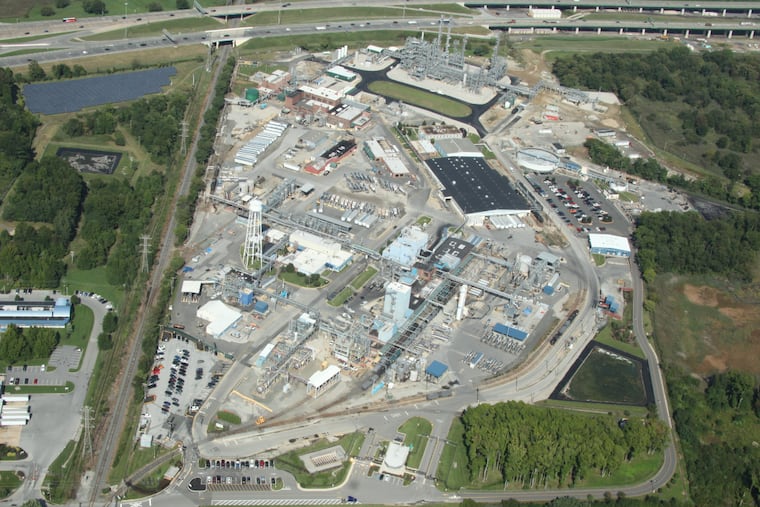Croda’s chemical plant on the Delaware River fails a pollution test, casting doubt on its rebuilding effort
In September the Croda unit failed an emissions test. The company says it is fixing the problem.

More than two years after a leak of explosive, cancer-causing ethylene oxide (EO) shut the twin Delaware Memorial Bridge spans on Thanksgiving weekend, Delaware officials say they will let the U.K.-based Croda chemical company briefly restart its Atlas Point EO production unit on the west bank of the Delaware River next month, to test whether it’s still leaking.
But the long-term future of the unit, a hopeful investment in the Delaware River’s aging chemical industry, remains in doubt, with the Delaware Department of Natural Resources and Environmental Control still mulling what it called “a path forward” for safe operation.
The plant, with 230 workers, continues to operate. Its ethylene oxide unit was cleared to reopen last winter after Croda replaced gaskets like the one it blamed for the leak, and agreed to pay $246,000 to Delaware for state construction, maintenance and safety violations. The company also agreed to pay $262,548 to the Occupational Safety and Health Administration for federal violations, and $150,000 to the Delaware River & Bay Authority for lost toll revenues when its bridges were closed as a precaution after the accident on Nov. 25, 2018. State officials said more than a ton of ethylene oxide was leaked, about four times the plant’s annual permitted discharge.
But in September the Croda unit failed an emissions test — state officials found scrubbers weren’t taking out ethylene oxide as expected, and that some of the gas was going out the top of a 110-foot smokestack from a source that Croda had not identified in its permit application.
State officials found that the plant has been discharging ethylene at four times the permitted level. They have also said neighbors of the plant, in a mixed area of industrial parks and modest homes along the Delaware north of historic New Castle, could face a slightly increased risk of cancer.
So investigators last month hit Croda with a Notice of Violation, signaling that the company had failed to resolve equipment problems with the unit.
“Work is already underway on correcting these deficiencies,” Croda marketing director Cara Eaton said in a statement.
Croda uses ethylene oxide in the production of surfactants, which it sells to chemical makers to help them produce antifreeze, and crop-seed coatings developed by the Wilmington-based DuPont Co. and sold by its pesticide spin-off Corteva. Croda also makes the mixing and separating agents used in processed foods, natural gas extraction, and other industries.
Croda and the plant’s previous owners at Atlas Point used to buy EO from a Sunoco-owned facility in nearby Marcus Hook, Delaware County. But that Pennsylvania plant caught fire and was shut down in 2009, after Sunoco decided it would not absorb the expense of rebuilding the works.
That obliged Croda to ship the substance by rail from remaining sources along the Gulf Coast.
In 2017, Croda said it would spend $170 million for the new unit, to make EO on site from alcohol, using a process previously installed at plants in China and India.
That decision was hailed by Delaware officials eager to save well-paid union industrial jobs at its surviving heavy industrial plants, and reduce the danger of a lethal rail accident. The DuPont titanium-oxide works in Edgemoor and the century-old steel plant in Claymont had recently closed down, following the idling of the GM plant in nearby Stanton. The state plans a port complex at Edgemoor, and a developer is trying to lure warehouses to the Claymont site; the largest-ever Amazon warehouse is now rising at the GM location.
Croda later reduced the scale of the EO unit from its original plans, state records show. It would not say how much it ended up spending.
The tests planned for January will monitor water circulation, temperature and pressure, and ethylene oxide levels.
With all the EO shutdowns, the plant has continued running, shipping EO up by rail from Texas as it did before the troubled unit opened.